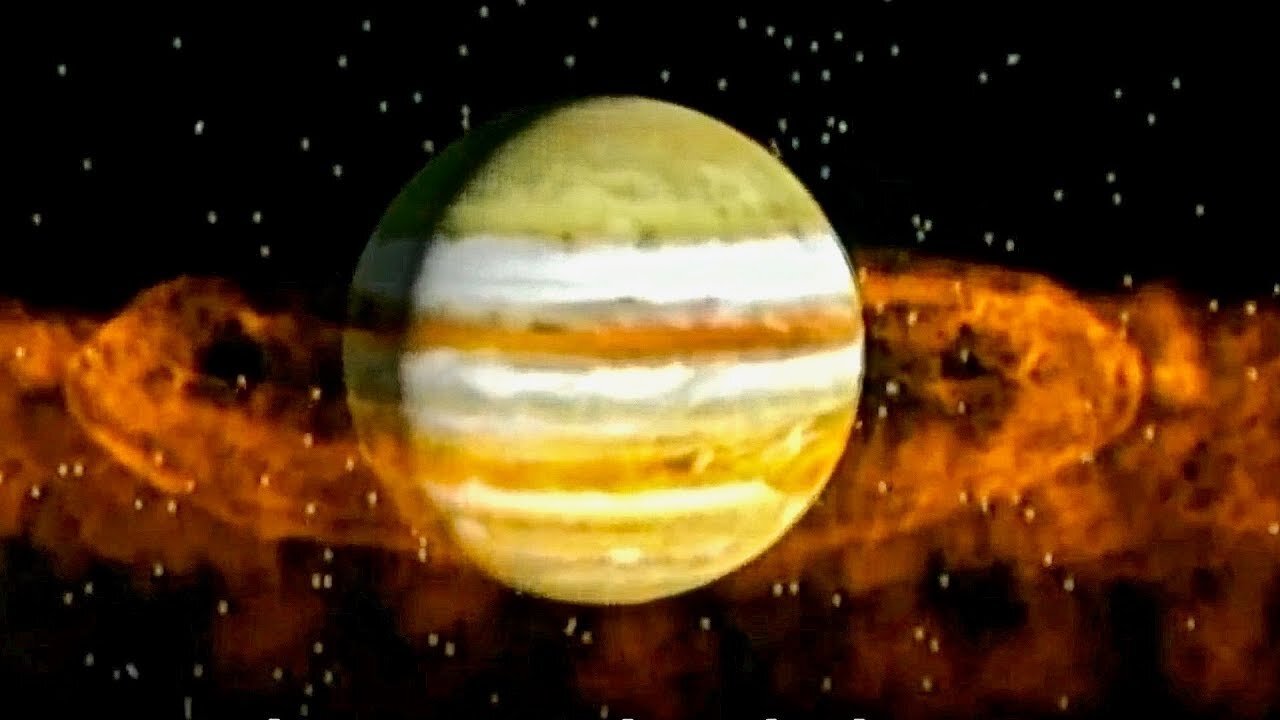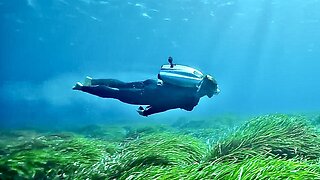Premium Only Content

Did You Know Jupiter Has Invisible Rings?
Jupiter is the fifth planet from our Sun and is, by far, the largest planet in the solar system – more than twice as massive as all the other planets combined. Jupiter's stripes and swirls are actually cold, windy clouds of ammonia and water, floating in an atmosphere of hydrogen and helium. Jupiter’s iconic Great Red Spot is a giant storm bigger than Earth that has raged for hundreds of years. Jupiter is surrounded by more than 65 known moons. Scientists are most interested in the Galilean satellites – the four largest moons discovered by Galileo Galilei in 1610: Io, Europa, Ganymede and Callisto. Jupiter also has several rings, but unlike the famous rings of Saturn, Jupiter’s rings are very faint and made of dust, not ice.
Jupiter is named for the king of the ancient Roman gods.
Size and Distance
With a radius of 43,440.7 miles (69,911 kilometers), Jupiter is 11 times wider than Earth. If Earth were the size of a nickel, Jupiter would be about as big as a basketball.
From an average distance of 484 million miles (778 million kilometers), Jupiter is 5.2 astronomical units away from the Sun. One astronomical unit (abbreviated as AU), is the distance from the Sun to Earth. From this distance, it takes Sunlight 43 minutes to travel from the Sun to Jupiter.
Orbit and Rotation
Jupiter has the shortest day in the solar system. One day on Jupiter takes only about 10 hours (the time it takes for Jupiter to rotate or spin around once), and Jupiter makes a complete orbit around the Sun (a year in Jovian time) in about 12 Earth years (4,333 Earth days).
Its equator is tilted with respect to its orbital path around the Sun by just 3 degrees. This means Jupiter spins nearly upright and does not have seasons as extreme as other planets do.
The composition of Jupiter is similar to that of the Sun—mostly hydrogen and helium. Deep in the atmosphere, pressure and temperature increase, compressing the hydrogen gas into a liquid. This gives Jupiter the largest ocean in the solar system—an ocean made of hydrogen instead of water. Scientists think that, at depths perhaps halfway to the planet's center, the pressure becomes so great that electrons are squeezed off the hydrogen atoms, making the liquid electrically conducting like metal. Jupiter's fast rotation is thought to drive electrical currents in this region, generating the planet's powerful magnetic field. It is still unclear if, deeper down, Jupiter has a central core of solid material or if it may be a thick, super-hot and dense soup. It could be up to 90,032 degrees Fahrenheit (50,000 degrees Celsius) down there, made mostly of iron and silicate minerals (similar to quartz).
Surface
As a gas giant, Jupiter doesn’t have a true surface. The planet is mostly swirling gases and liquids. While a spacecraft would have nowhere to land on Jupiter, it wouldn’t be able to fly through unscathed either. The extreme pressures and temperatures deep inside the planet crush, melt and vaporize spacecraft trying to fly into the planet.
Atmosphere
Jupiter's appearance is a tapestry of colorful cloud bands and spots. The gas planet likely has three distinct cloud layers in its "skies" that, taken together, span about 44 miles (71 kilometers). The top cloud is probably made of ammonia ice, while the middle layer is likely made of ammonium hydrosulfide crystals. The innermost layer may be made of water ice and vapor.
The vivid colors you see in thick bands across Jupiter may be plumes of sulfur and phosphorus-containing gases rising from the planet's warmer interior.
Jupiter's four largest moons—Io, Europa, Ganymede and Callisto—were first observed by the astronomer Galileo Galilei in 1610 using an early version of the telescope. These four moons are known today as the Galilean satellites, and they're some of the most fascinating destinations in our solar system. Io is the most volcanically active body in the solar system. Ganymede is the largest moon in the solar system (even bigger than the planet Mercury). Callisto’s very few small craters indicate a small degree of current surface activity. A liquid-water ocean with the ingredients for life may lie beneath the frozen crust of Europa, making it a tempting place to explore.
Rings
Discovered in 1979 by NASA's Voyager 1 spacecraft, Jupiter's rings were a surprise, as they are composed of small, dark particles and are difficult to see except when backlit by the Sun. Data from the Galileo spacecraft indicate that Jupiter's ring system may be formed by dust kicked up as interplanetary meteoroids smash into the giant planet's small innermost moons.
Music: Dream Walking by Dhruva Aliman
Amazon- https://amzn.to/3eLFy0P
https://music.apple.com/us/artist/dhruva-aliman/363563637
https://dhruvaaliman.bandcamp.com/album/hello-moon
http://www.dhruvaaliman.com/
Spotify - https://open.spotify.com/artist/5XiFCr9iBKE6Cupltgnlet
-
 1:58
1:58
Seeker Land
3 days agoFly Through Water ~ First-Ever Underwater Jetpack! ~ CudaJet
29 -
 DVR
DVR
AimControllers
2 hours ago $1.59 earnedTRIVIA NIGHT!! WIN CUSTOM CONTROLLERS!!
15.3K3 -
 LIVE
LIVE
Barry Cunningham
3 hours agoWELCOME TO THE FANFARE MOVIE NIGHT! YOU WON'T WANT TO MISS THIS INTERVIEW AND FILM!
7,331 watching -
 15:23
15:23
Mrgunsngear
10 hours ago $0.29 earnedSig Sauer Enclosed Sig Loc Romeo-X Compact Red Dot Torture Test & Review
2.07K2 -
 LIVE
LIVE
PandaSub2000
1 day agoLIVE 9pm ET | PICTIONARY & ANTICIPATION with Chat!
154 watching -
 LIVE
LIVE
megimu32
1 hour agoON THE SUBJECT: The Villains We Loved to Hate - Childhood Trauma Reloaded
109 watching -
 LIVE
LIVE
SpartakusLIVE
5 hours ago#1 Verdansk HERO || Live EARLY off EARLY
149 watching -
 LIVE
LIVE
Precision Rifle Network
1 day agoS4E21 Guns & Grub - New Optics and Chronographs
48 watching -
 7:28:28
7:28:28
Dr Disrespect
10 hours ago🔴LIVE - DR DISRESPECT - WARZONE VERDANSK - EXTREME CHALLENGES
149K7 -
 26:31
26:31
Glenn Greenwald
7 hours agoTrump at the NATO Summit: Michael Tracey Reports from The Hague | SYSTEM UPDATE #477
91.5K14